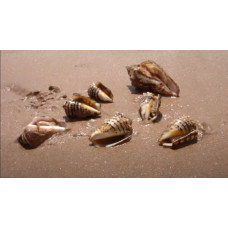From the Greek lithos - stone and phileo - love.
Lithophiles are an ecological group of fish that reproduce on stony ground, in rivers in currents or on the bottom of oligotrophic lakes (sturgeons, salmonids). Eggs are sticky and develop in good oxygen conditions.
Extremophilic microorganisms that can exist in the crevices and pores of sedimentary and even volcanic rocks at a depth of several kilometers. Some live on the surface of rocks and provide energy by photosynthesis. Those that live at depth do not photosynthesize, but get their energy from the minerals around them. They can live in rock crevices where water accumulates. The water contains dissolved carbon dioxide (CO2), which the microbes use to meet their need for carbon. They have been found in rocky rocks at a depth of about 3 km, where temperatures reach about 75°C.
Stoneflies are usually immobile or slow-moving marine animals capable of breaking down rocks, corals, and mollusk shells (mechanically or by chemical secretions), such as some sponges, polychaete worms, crustaceans, and mollusks.
Lithophiles
Tags: lithophiles

